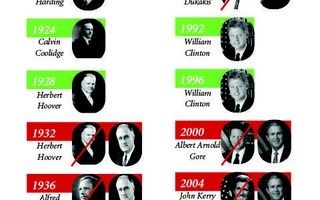President Franklin D. Roosevelt’s famous fireside chats did not take place next to the cozy hearth their name suggests—but they might as well have. Roosevelt spoke over the radio, after all, so no one could see him.
Roosevelt’s shrewd decision to ride the radio wave of technological progress into the hearts of millions of Americans set precedent for countless presidents to come. Over the years, the Oval Office has doubled as a radio broadcast room, a television studio, and now something like a teenager’s couch: Twitter has scratched, clawed, tweeted, and retweeted its way up from popular culture into politics.
The evolution of many politicos into veritable twitterati—President Barack Obama, for example, holds the record for most retweeted post—has presented both perks and problems. On the plus side, elected officials on Twitter can communicate directly and efficiently with more constituents than ever before. But that communication comes in the form of 140-character blasts designed to catch the eye rather than stimulate the mind. As a result, tweets can often manipulate more than they inform.
Roosevelt, too, played the public in his fireside chats. For one thing, the addresses’ homely charm was manufactured—listeners imagined the president sitting next to the same crackling logs and flames that graced their own living rooms when, in reality, he reclined behind his far from unassuming desk in the Oval Office. For another, speaking over the air allowed Roosevelt to communicate with citizens without worrying about revealing his wheelchair. The chair, Roosevelt thought, made him look weak to a nation itself crippled by financial ruin.
All the same, the fireside chats ultimately achieved a worthy goal: Roosevelt helped restore confidence to a frightened, struggling country. He forged a personal connection with his constituents and made his message—a substantive, significant one—heard. As the years went on, however, radio became old news. The rise of television brought with it cause for a deeper concern: that the public might find itself swayed not by the points of a politician’s platform but by the cut of his hair and caliber of his smile.
The nation’s first televised debate brought together Democratic nominee John F. Kennedy and Republican candidate Richard Nixon in a contest that some say determined the election’s outcome. Kennedy, young, fresh-faced, and fit, won over most of the approximately 74 million viewers who watched the battle on television. Nixon, who faced the cameras with sunken cheeks and a sweaty brow, fared much worse among that crowd. Listeners on the radio, however, thought different: Based on the content of the contenders’ answers—appearances aside—Americans believed that Nixon had stolen the day.
Twitter should set off the same warning bells today that rang loud in 1960. Tweeters likely do not judge politicians based on the quality of their avatars (though Hillary Clinton’s clever nod to the Texts From Hillary meme that swept the Internet certainly cannot hurt). But still, superficiality often wins out over substance in the Twittersphere. For example, a recent tweet about Bo Obama, First Dog of the United States, trying to “make fetch happen” got considerably more play than another with a link to President Obama’s statement on the current situation in Syria. Cute, neatly packaged tweets that transform presidential pooches into furrier versions of Gretchen Weiners go over better with the public than do serious missives about the issues of the day.
Couple that with Twitter’s 140-character limit, and tweets necessarily become reductive. The politicians who find the most success on Twitter do so by condensing their messages into easily digestible mini press releases that, while often times entertaining, provide readers with only the bare bones of their representatives’ reasoning. In order to get to the meat of the decisions made daily in the White House and on the Hill, readers must delve deeper. A clever tweet has its merits but should never on its own convince a constituent of the virtue of a politician or the value of his plans.
New technologies like Twitter introduce new possibilities for politics, at best resulting in a better-informed populace due to easier communication between officials and their constituents. But they also present new dangers. The allures of a shiny new platform like Twitter may distract citizens from the sometimes-duller issues of real import. By all means, we should follow politicians on Twitter—let’s just take care not to do it blindly.
Molly L. Roberts ’16, a Crimson editorial writer, lives in Cabot House.
Read more in Opinion
Dissent: Pay the Real MinimumRecommended Articles
-
Harvard, Teddy Roosevelt, and FootballAs the NFL continues to deal with negotiations between owners and the Player’s Union, it calls for a look to the past when the game of football almost ended, forever.
-
John Blum, Former Harvard Corporation Member, Dies at 90Former Harvard Corporation Fellow and famed presidential biographer John M. Blum ’43 died Oct. 17 from complications with pneumonia at his home in Branford, Conn.
-
So You Want to Be PresidentIf you want to be a leader in politics, you need to be motivated by more than a sound bite.
-
 If Harvard Picked The President
If Harvard Picked The President -
 Chris Matthews Criticizes Republicans Playing Hardball in Fiscal Fight
Chris Matthews Criticizes Republicans Playing Hardball in Fiscal Fight -
Who Needs a Student Center When We Have the Porcellian?A few weeks ago, the Harvard administration announced some unsettling news. After a lengthy search, a donor for the long-proposed student center had finally been secured. Though construction won’t start on the building for quite some time, the center will likely feature large spaces that can be used for parties, events, and lectures, as well as smaller areas for less formal gatherings.













